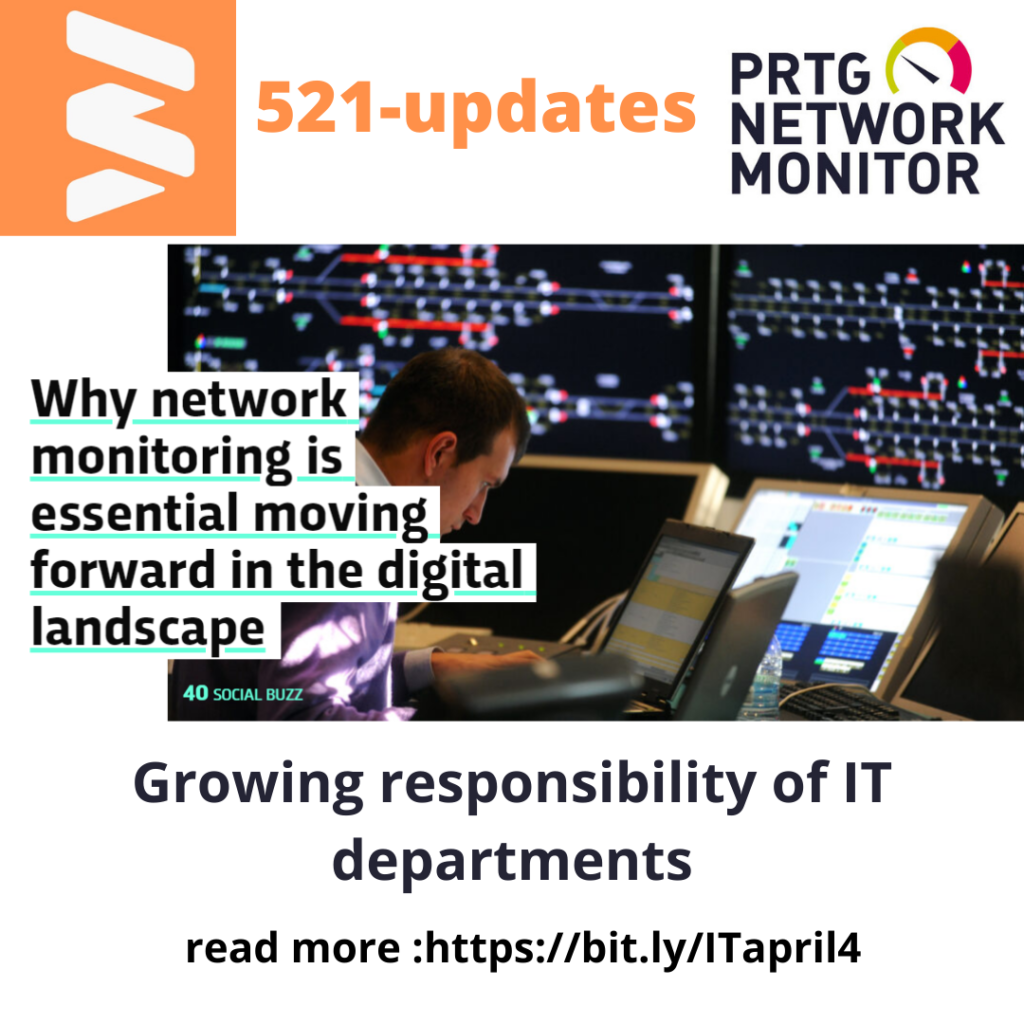
The unprecedented disruption by the COVID-19 pandemic has accelerated the urgency for companies everywhere to navigate industry disruptions and manage the transition to a new normal. The future of the digital economy will see many more organizations become more agile, adapt faster, and transform, as industry structures and business models continue to be upended and disrupted.
In 2022, change in the digital landscape is hastening at an unrelenting pace with new technologies, platforms, and business models continuing to reshape the industry. In the face of this disruption, organizations will need to look toward new, digitally-enabled business models that fully leverage innovations in the space. Forecasting what comes next is always challenging, but Paessler believes the following trends will be important for organizations to focus on in the coming year.
Cloud and cloud-based applications have been gaining importance for some time now. COVID-19 and the resulting changes in the workplace have not fundamentally altered this, but the shift towards the cloud has been given a major boost. As such, there will be a further increase in the importance of cloud, network, or application performance monitoring over the next year and beyond. When coupled with the growth of hybrid cloud strategies, there are more environments to monitor and measure than ever.
As the complexity of the IT landscape continues to grow, more specialized solutions that provide deep insights into clearly defined areas will be crucial. Centralized management is expected to be vital, and the way to achieve this across even the most complex IT landscapes is to focus on monitoring solutions that are as broadly based as possible and are able to monitor organizations across all silos of the business.

Sebastian Krueger
Vice President of Asia Pacific, Paessler
Growing responsibility of IT departments
Digitalization has significantly increased the responsibility of the IT team and will continue to do so in the digital landscape. IT departments will be the central hub of any business with touchpoints across every area, and the skills and tools needed are constantly evolving. This is especially true for digital data, and IT departments must ensure that all data is effectively and efficiently stored and delivered without any hiccups.
It is going to be essential for organizations to ensure that tools are in place to monitor IT infrastructures and to help IT teams manage the ongoing digitalization of the sector and their increased responsibility.
Digital waste to become more important
At the 2021 United Nations Climate Change Conference calls to add digital waste to the agenda highlighted a growing awareness of the issue. Organizations worldwide will have to consider how they can reduce their digital waste – and IT monitoring will play a huge part in this endeavor.
Monitoring can help enhance the lifecycle of a digital product, ensuring that equipment is running at optimal levels. By extending the lifetime of digital devices, we can reduce the production of new products and decrease the surge in digital waste. To manage IT waste the teams in charge need to be well-informed, therefore businesses should focus on monitoring strategies to ensure equipment maximization and longevity. IT teams with the necessary data at their disposal will be able to reduce digital waste in the long term, subsequently helping organizations achieve environmental targets.
AI– overhyped or one to watch?
AI now permeates every facet of our life. The development of cloud technology means that AI is now more present than ever before, and this trend is expected to grow this year in the digital landscape.
When it comes to network monitoring, AI plays an important role as it collects large amounts of data, analyses it, and recognizes patterns. AI can spot anomalies and improve root-cause analysis, providing organizations with valuable insights to identify trends and leverage predictive maintenance. Moving forward, organizations will have to seek monitoring solutions that are not only cloud-based but also evolve in their application of AI.
Skills shortage
Globally, the IT industry is facing a skills shortage. While the implications are huge, there is no quick fix available, and we will continue to feel this pinch in the coming year. Therefore, it will be more important than ever to automate as many IT processes as possible and leave human intervention only for the top business priorities. This frees up the IT team which can focus on business growth as opposed to executing mundane tasks.
Furthermore, the skills shortage also means that organizations will need to turn towards high-level Managed Services Providers (MSPs). The demand for companies with a professional team that can remotely monitor the end-user enterprise IT environment is higher than ever. Thus, it is likely that we will see MSPs try to further specialize in their offerings over the next year.
IT/OT convergence
Data governance, cybersecurity, compute infrastructure, and holistic and cohesive technology architectures – and the internal and external skills to support them – are all key focus areas this year and beyond. The growth of Industry 4.0, the retrofitting, and the associated networking of IT and OT also require enhanced monitoring. Only a central, higher-level monitoring solution can secure cross-departmental and cross-team processes in planning and production, and be able to uncover interrelationships. The challenge here then is adapting it to the increasing amount of software being used in the digital landscape.
IT and OT must work together, which is becoming even more significant due to the accelerating digitalization. We believe that throughout the year, strategic partnerships will be formed between 40% of market-leading IT and OT vendors to deliver a holistic solution, reducing integration and deployment costs by 20%. Also, to support autonomous operations, organizations will increase their investments in data governance, digital engineering organizations, and digital operations technologies by 40%.
Digitalization is here to stay
Due to the pandemic, many companies were forced to digitalize quickly, spurred by remote working needs. Moving forward, we will see even more use of video conferences and collaboration tools and further growth of new digital business models.
Digitalization and remote working arrangements will therefore remain very relevant topics for organizations in the digital landscape. Monitoring these decentralized infrastructures will continue to be a challenge that many companies will have to contend with going forward.
The views expressed in this article is that of the author and do not represent Tech Wire Asia.

